Introduction
Asian art has a long and endearing history of skill, tradition, introspection, and connection to the spiritual world. For thousands of years that the Asian continent was separated from the rest of the world by distances, it followed its path of evolution. Asian artists are known for their skillful craftsmanship, as they are capable of creating beautiful works of art, be that paintings, pottery, or sculpture.
The bond between generations is easy to perceive, as every new generation of artists added something new while honoring the traditions of their ancestors. Asian art was influenced by a wide variety of historical events, religions, conquests, and cultural adaptations. Buddhism and Hindu religions, in particular, played an important role in the formation and evolution of art in China, India, Japan, and other Asian countries since at least 5th century BCE.
These religions promoted an introspective way of life, and their temples were decorated with beautiful statues out of wood, stone, and gold. Many of these works of art are presented in museums. The purpose of this paper is to analyze several works of Asian art and sculpture and reflect on their aesthetical, historical, and philosophical meanings, to develop a personal sense of taste.
The Amulet Box (Gau)
This ritual box was made in the 19th century in Tibet and is currently in possession of the Rubin Museum of Art. It is a gift to the museum made by Ralph Redford – a private collector. The box itself is made of silver, with a metal plate on the backside. This box is a religious Tibetan object. It was used to carry various religious artifacts and serve as a portable shrine. The central window of the box is meant to reveal a small statue of Buddha, usually carried inside.

This box is an excellent example of meticulous craftsmanship, as the ornament and the images engraved in silver had to be made with extraordinary skill and care. The images represent an elephant, a lion, an antelope ridden by a Deva, a sea monster, a naga serpent, and a garuda. Above the window, there are three important teachers of Tibetan Buddhism. This beautiful work of art had a great spiritual significance for its owner and indicated their allegiance to sectarian Buddhism. By enabling the owner to use this box as a portable shrine, it ensured the integrity of the spiritual connection with the divine. Later, this practice faded out, as Buddhism adopted the concept of “a temple within oneself,” which did not require any ornamental boxes to pray.
Green Tara
Green Tara is a 17-century brass statue attributed to Choying Dorje – a famous Tibetan artist and craftsman from the 17th century. He was also the head of Karma Kagyu School of Tibetan Buddhism. This work of art is currently kept in the Rubin Museum of Art. This work is interesting not only for the superb craftsmanship and deep spiritual meaning of the statue but also for its creator’s highly personalized style of self-expression.
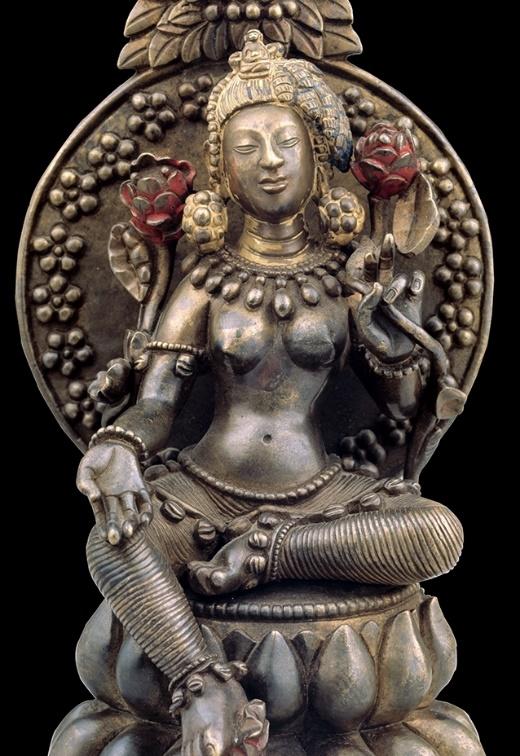
What amazed me in this statue is the number of personal choices and influences made when crafting it. The author incorporated the metalworking practices from Kashmir and Swat into his style, which could be seen by his choice of tight-fitting clothes for the statue, as well as representing the hair in one petal slab. The artist also incorporated his love of nature into this metalwork by adding a pair of birds to the composition.
As it often is with religious art, this statue was dedicated to Tara and serve as its earthly embodiment and spiritual conductor. Many elements of this composition have a sacral and hidden meaning to them, starting from the pose that Tara is in, and ending with the foundation, which is made in the form of a lotus flower. The pose bears similarities to the dancing pose that Shiva is often depicted in, symbolizing success and good fortune. Asian art uses body language and subtle signs and religious motives to convey its message.
Shiva Vishavarupa
Shiva Vishavarupa is a 19th-century drawing on cloth, which depicts Shiva – one of the major gods in Hinduism and the supreme god for the Shivaite sect. It is currently displayed in the collection of the Rubin Museum of Art. Interestingly, much of Asian art is in one way or another associated with spirituality and religious practices. This work of art is another example. Shiva is considered the god that represents every aspect of life – death and rebirth, love and hate, creation and destruction, etc. What is depicted in the painting is his “universal form.”
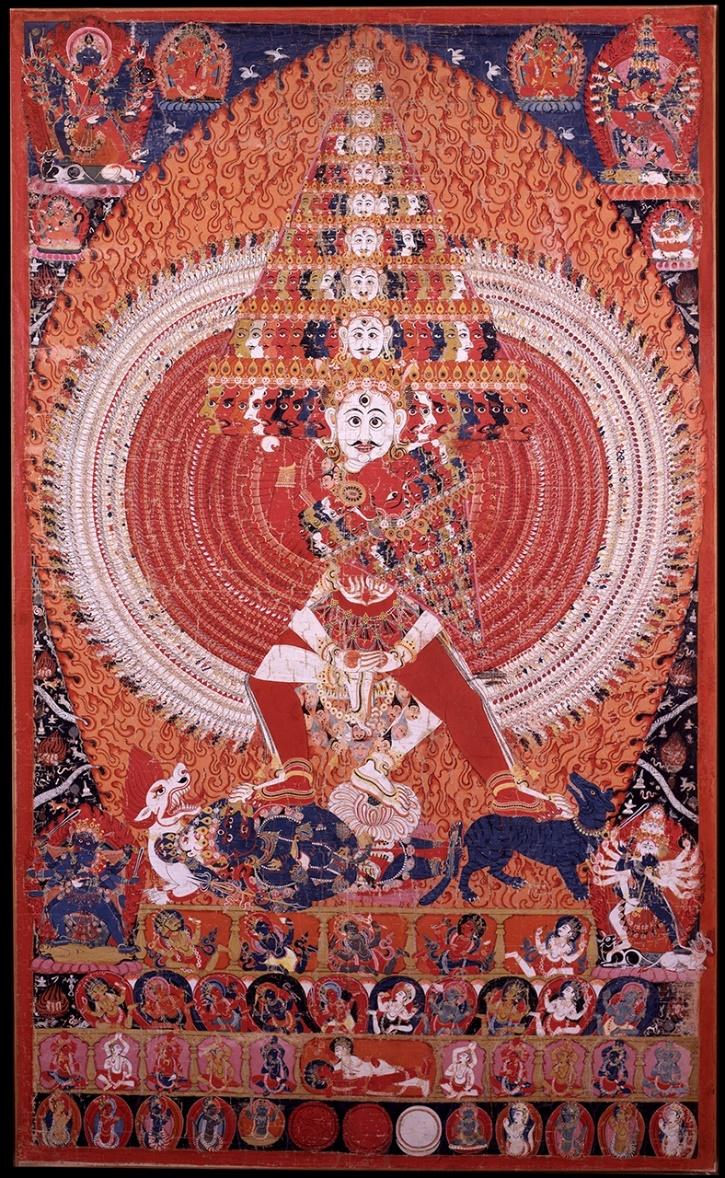
What interested me about this work of art was the metaphoric projection of Shiva into every aspect of the world’s existence. This is achieved by the expansion of the god in all directions, occupying the majority of the picture, thus attesting to the divine creation of the world. This artwork is also a testament to its creator’s carefulness and dedication, as the painting itself is huge and consists of hundreds of smaller elements, each of which is a symbol that could only be understood within the context of Shivaite faith.
Bhiramata Chariot Ritual
This gilt copper repousse is an 18-century artwork currently in possession of Rubin Museum of Art. It represents a religious celebration known as the Chariot Ritual, which is performed when a Buddhist elder achieves the age of 77. The artifact is a brilliant example of careful and meticulous craftsmanship, which is common for many Asian works, serving as a testament to the patience and dedication of the artist.
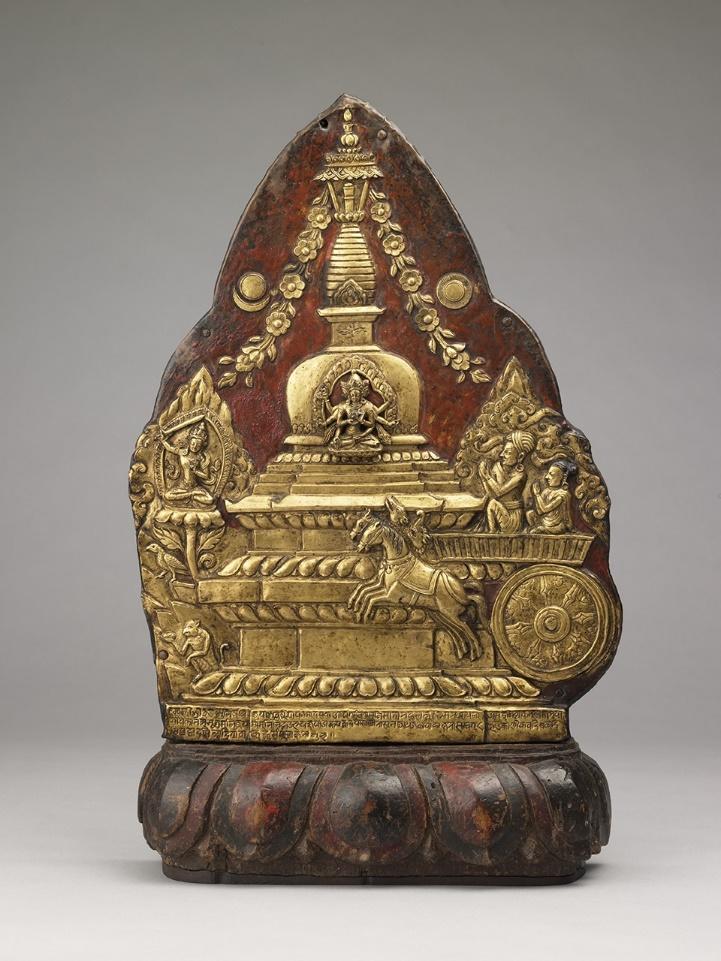
What amazed me about this work of art, besides the incredible attention to the smallest of details, is the three-dimensional statue of Manjushri, the Bodhisattva of Wisdom, in the middle of the stupa. This tiny statue was crafted separately and then attached to the composition in a seamless way that makes it look as if it was carved from the same piece of metal as the background, which attests to the artist’s skill. This stupa has a deeply religious meaning, as it was crafted for a family who could not afford to build a full-sized stone stupa, yet was meant to serve the same religious purpose.
Dancing Red Ganapati
Indian art is known for using cloth instead of paper, which motivated the use of certain patterns and colors. The 16th-century artwork, the Dancing Red Ganapati, is one such example. The predominant colors in the majority of Indian artworks are either very bright or dark, as these colors take to cloth the best. At the same time, the choice of color helps translate a special religious meaning and context and tells us about the demeanor of the god.
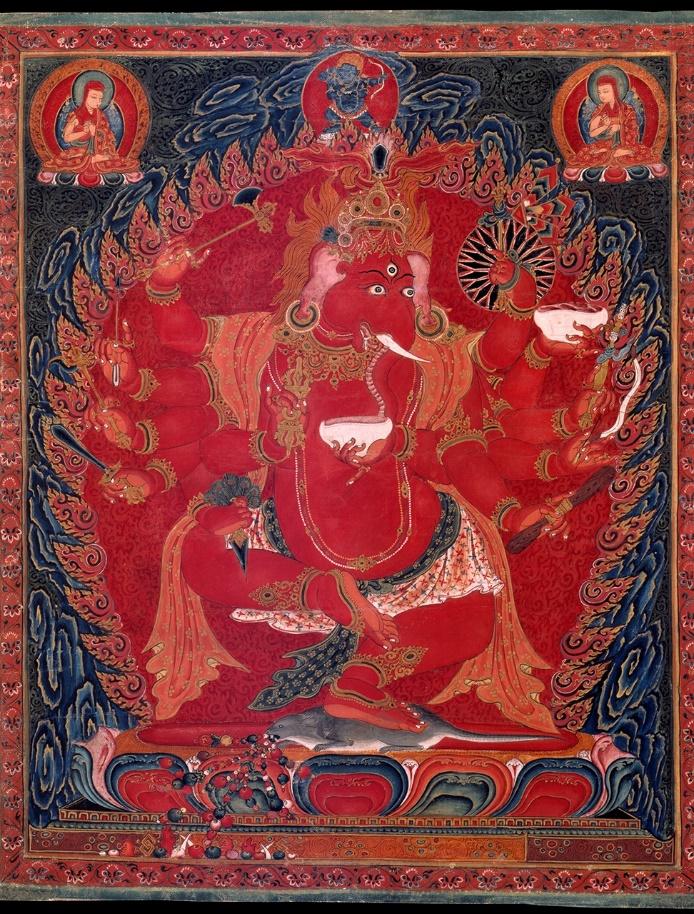
In Buddhist mythology, Ganapati symbolizes vitality and strength, which opts for the choice of the color red to represent it. At the same time, the dark blue scroll patterns indicate an influence of Nepalese art. It amazed me how much do the art styles from different regions and Buddhist schools interlock in a single painting.
Shiva as Nataraja
Shiva is a very interesting god to portray from an artistic perspective because it has many faces and embodiments. In Shivaite Hinduism, every aspect of life is related to Shiva. The 12th-century copper statue of Shiva, which is now in possession of Asia Society, was used to represent success and kingly aspirations, meaning that it belonged to someone rich and powerful. The artisanship in this piece of art is exceptional, particularly in terms of realism – the body of Shiva is depicted in a very fluid posture, resembling movement even though the figure is standing still.
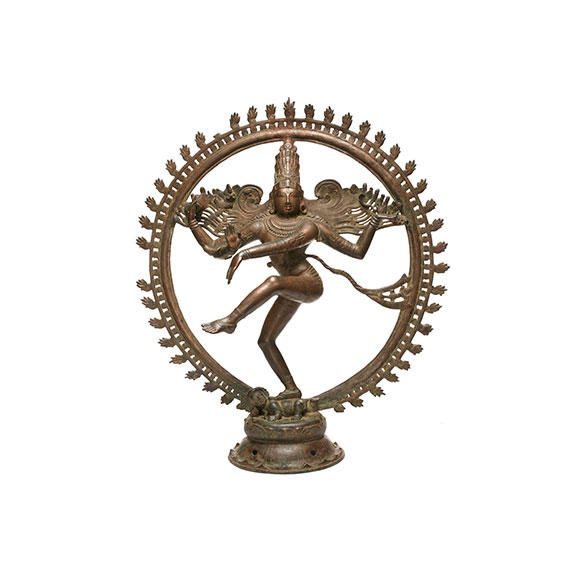
Despite being relatively small, the artist uses symbolism to transfer a message and invoke godly favor upon its owner. Shiva is often shown with a drum in hands. The drum in this setting has several meanings. It is a symbol of creation and destruction, of death and rebirth, and the rhythm of life. The body position is symbolic as well. With the open hand and a raised foot signifying salvation, deliverance, and good fortune. The creature below the statue is called Mushalagan. It is a demon of cowardice, fear, and ignorance. It is amazing how many hidden messages can a single statue has within itself.
Ganesha
In Hinduist mythology, Ganesha is the son of Shiva and Parvati. He serves as the God of War. His 11-century bronze statue, presented in the collection of Asia Society, is amazing not only from a perspective of craftsmanship and aesthetics but also from an interpretational point of view. This piece of art possesses several hidden symbols and messages, depicted in the character’s choice of weapons and items.
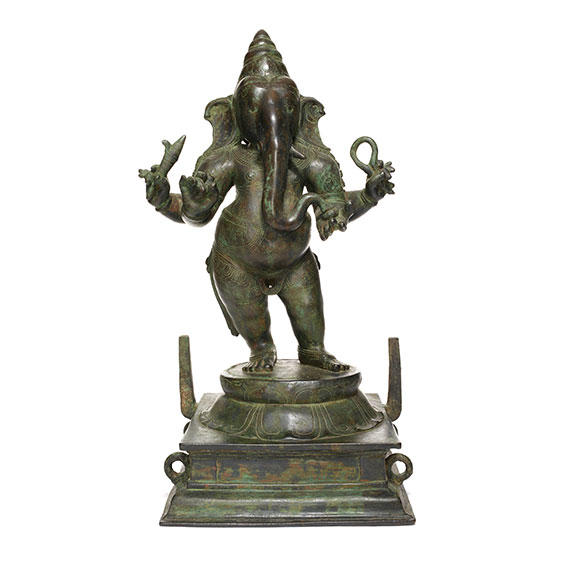
As a god of war, Ganesha carries a mace and a lasso. The lasso symbolizes the god’s ability to enrapture a devotee. It is placed upon a very strong and sturdy-looking foundation, which symbolizes resolution and resilience in the face of an obstacle. Ganesha is considered a god of luck, good fortune, and auspicious beginnings.
Conclusions
In my opinion, art is not just self-expression. Not every example of self-expression deserves the worship and reverence that the word ‘art’ invokes. To be considered art, it must be created with dedication and skill, be aesthetically beautiful, and possess a hidden message and a connection to the spiritual. The works presented in this paper all deserve to be called art, as their value is obvious to us hundreds of years later.
Real art transcends time, while fake art vanishes into obscurity. As it is possible to see, Asian traditional art and sculpture fit the criteria. The amount of effort and attention to detail in each of the reviewed works is astonishing. The hidden meaning behind every small detail could evade a western viewer but would be open to people who have immersed themselves in the cultural traditions of Buddhism and Hinduism. The value and beauty of Asian art are undisputed and remains a testament to the region’s cultural development. The experience of seeing and reviewing the exhibits of ancient art was very enlightening.